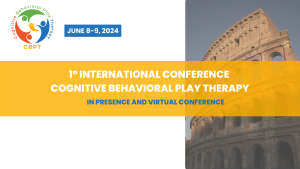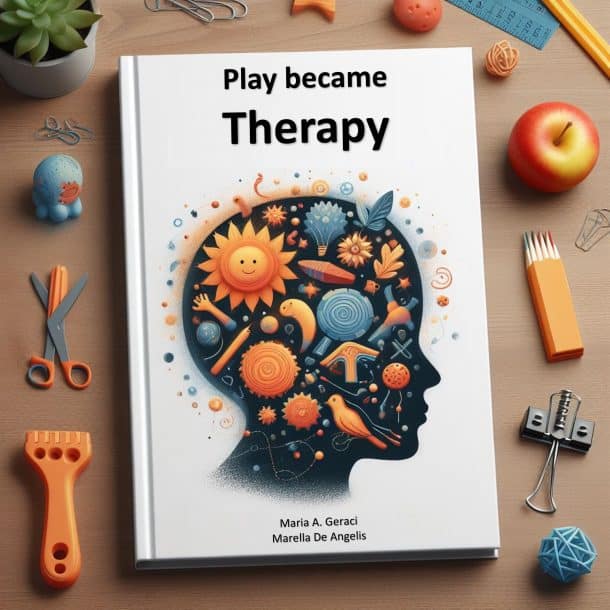Anxiety disorders are among the most prevalent psychiatric disorders in children and adolescents (Albano, Chorpita & Barlow, 2003; Costello, Mustillo, Erkanli, Keeler, & Angold, 2003).
Preschool children suffer from anxiety disorders at a similar rate as school-age children (Egger & Angold, 2006; Lavigne et al., 2009). Also, if anxiety disorders in young children are left untreated, symptoms may persist and worsen into adolescence and adulthood (Albano et al., 2003; Costello et al., 2003). Research has shown that children with untreated anxiety disorders are also at great risk for developing depressive disorders and substance use disorders (Costello et al., 2003; Weissman, 1999). Therefore, early identification and intervention are crucial to prevent poor developmental and long-term outcomes.
Anxiety is a normal emotional experience for all children and if transient is considered evolutionarily appropriate and specific at each stage of development. For example, during the preschool years children commonly experience anxieties about separation, while school-age children often experience anxieties about physical health. Normal level of anxiety usually
Normal anxiety levels generally range from mild to moderate, are transient and do not interfere with the child’s daily functioning (Klein & Pine, 2002). Beesdo, Knapp and Pine (2009) outline 2 dimensions for recognizing clinical anxiety: (1) disproportionate intensity, and (2) level of avoidance associated with distress or impairment, therefore the interference with the child’s daily life.
The Cognitive-Behavioral Play Therapy (CBPT) intervention reported in this article is taken from the work of Susan Knell and Meena Dasari Cognitive-behavioral play therapy for children with anxiety and phobias (2006), where the application of CBPT is described with a child with social anxiety disorder.
Background information
This case illustrates the story of a 4-year-old boy with Social Anxiety Disorder presenting severe anxiety in new and unfamiliar social situations (playdates, birthday parties, and extracurricular activities). Prior to attending any of these events, the child often says he doesn’t want to go, cries and throws tantrum. When his parents push him to attend social situations, he becomes avoidant, clings to them and refuses to interact with others. Although he feels comfortable, he leaves his parents’ side but remains silent and stays at a distance from other children. These symptoms started at the age 3, so in the last year, the activities that he attended and participated have gradually decreased. The social anxiety has start to limit his social world.
Assessment with parents
For assessment, a clinical interview with parent, behavioral observation and behavior rating scale were used. Medical history and developmental milestones were within normal limits. Based on the clinical interview with the mother, evidence was gathered of the anxiety symptoms described above; she reports that parents responded inconsistently to child’s anxiety and avoidance of social situations: at times they are empathic with his feelings while at other times express frustration and anger. Similarly, they push the child to participate in some instances and allow him to avoid others.
As a supplement to the clinical interview, the Spence Preschool Anxiety Rating scale-Parent Report questionnaire was administered to parent, which revealed clinical levels of overall anxiety (i.e., total score of 17 with clinical level cut-off of 14.12).
Assessment with child
Behavioral observations were also consistent with other assessment measures.
Treatment
The Cognitive Behavioral Play-Therapy intervention included 14 individual sessions, 3 parent sessions via phone for psychoeducation and skill building, and 1 session including the mother for coaching on the exposure task.
During the first session, the child was anxious and reluctant to introduce himself, he whispered the answers to the therapist’s questions in his mother ear. Entering the play therapy room, he immediately selected some animals but deferred to the therapist to introduce and have the animals talk. He was restless and answered questions with one word or short phrases. Interventions of somatic management, cognitive restructuring, positive self-affirmation, exposure, modeling and shaping were implemented to lessen anxiety symptoms and to increase social interactions. The materials used were mainly several animal puppets, such as “Buddy”, a little dog worried about meeting new people.
To prepare for development of CBT skills, psychoeducation on emotions was the first intervention. The child had difficulties acknowledging and identifying his anxiety, so emotions were introduced (1) as internal experiences that involve body sensations and thoughts and (2) as common experiences for everyone. Puppets took turns discussing different emotions by describing what they felt in their body and what they thought. In this way, his body sensations and thoughts were identified, discussed and normalized as part of his anxiety.
After the first few sessions, the child was able to discuss his anxiety (called “worry” given his level of development). He identified it as characterized by heart racing, stomach butterflies and shaky legs. He was unable to identify common anxiety-related thoughts, but he acknowedged his maladaptive thoughts related to “Something bad will happen”. To implement Cognitive-Behavioral Play Therapy for emotional education, modeling interventions were used (with Buddy, who was “worried about making friends and being in new situations”).
Somatic management/relaxation was introduced. The child learned body breathing with Buddy and other animals and learned self-control as a distraction strategy through play. In play, the boy identified that Buddy played soccer and flew a plane to take his mind off his worries. Thus, the child learned to squeeze a ball as an activity to distract him from the body sensations related to his worry outside of session.
Once relaxation and distraction strategies were practiced for a week at home, cognitive restructuring was started. First, the child was taught the concept that changing negative thoughts to more positive realistic thoughts lessens anxiety. Labels of “worried thoughts” and “calm thoughts” were used and different play situations were created (treehouse, soccer game, pool party), where the therapist identified both types of thoughts using the animals’ verbalizations. With the shaping, in three sessions the child was gradually asked to identify a “worried thought” and then a “calm thought”. The child was able to identify calm thoughts he practiced repeating at home, including “Worry is just a feeling in my body” and “I am strong and I can fight worries”. A calm thought was chosen as the child’s main positive self-statement, which was: “I do things to make worry go away”.
After the child showed understanding and mastery of the strategies, exposure was introduced, in two parts. First, the child was asked to meet other children or to do new and unfamiliar activities. Prior to practicing at home, the child played different scenarios with Buddy and other animals. Then, systematic desensitization was incorporated into play and as part of exposure as the “calm-dawn plan”, created as the adaptive response to replace avoidance with the following steps: (1) three deep breaths, (2) calm thought of “I do things to make worry go away” and (3) do something fun and distracting like squeeze ball. Once the child appeared confident and comfortable with play situations about social situations, the focus was moved to summer activities outside of the therapy room. The second part of the exposure was meeting new adults in session. Initially, the child was asked to practice in play with Buddy completing the task first. In addition to the calm-down plan, three adaptive skills for introductions were taught to replace avoidance or withdrawal (i.e. getting quiet and withdrawn), which involved: looking a person in the eye, shaking hands, and saying “Nice to meet you”. Again, when he displayed mastery in play, the child was asked to practice meeting new adults in natural settings such as the wait staff, school security guard, and parents at play or sports settings.
Parent involvement supplemented the individual session with the child. All parent sessions were done either before the child session or by phone. Psychoeducation was provided related to the diagnosis; mother was taught the CBT model (i.e., connection between events, thoughts, emotions [anxiety], and behavior) as well as about social anxiety disorder symptoms. Mother was also integrated into child’s practice of skills outside of session: she was asked to help the child identify his anxiety by discussing his own anxiety as well (i.e., modeling acceptance of anxiety); she was taught deep breathing and asked to practice each night at home to build skills (relaxation and calm-down plan); also she was asked to remain in the play therapy room during exposure interventions, to allow the therapist to modeled positive reinforcement and shaping to replace mother’s increased attention for avoidant behavior (i.e., differential reinforcement of other behaviors).
The child was prepared for termination and the final session was focused on relapse prevention. He was asked to create a book summarizing treatment into three chapters corresponding to: 1) the identification of worry; 2) worry management strategies (calm-down plan); 3) all the exposure tasks that the child completed in and outside of session. The purpose was to remind him that doing tasks helped him to feel a sense of control and mastery over worry.
Results
The child showed improvements in social functioning. In addition, the child’s play ability within sessions also improved, showing more organization and structure around complex themes. The child, outside of sessions, was better able to participate in play without fear of evaluation or rejection.
Follow-up
For post-treatment assessment, the Spence Preschool Anxiety Rating Scale-Parent Report was re-administered to the mother, indicating normal levels of overall anxiety (i.e., total score of 12 with clinical-level cutoff of 14.12) as compared with clinical level score at pre-treatment (i.e., total score of 17). This rating matched mother’s verbal report of decreased anxiety and increased approach behavior (vs. avoidance) in social situations. The child was social at camp and during summer activities and expressed interest in going to social events. Prior to arriving, he used the calm-down plan and also he was able to greet and then play with other children at events.
Discussion
Anxiety disorders and phobias are among the most commonly occurring psychiatric disorders in childhood, with preschool children demonstrating similar prevalence rates as school-age children and adolescents.
Recent literature suggests treatment should be implemented in two phases: (1) skill building (psychoeducation, somatic management, and cognitive restructuring) and (2) exposure, with the emphasis being to move quickly through phase one and to focus on phase two (Kendall et al., 2006).
With Cognitive-Behavioral Play Therapy, a significant component of overcoming anxiety appears to be the child’s gaining control and mastery over negative emotions. Developing this sense of control may mean that the child learns to deal with feared stimuli, to manage feelings associated with the fear, or to learn specific coping skills to deal with the fear.
Cognitive-Behavioral Play Therapy provides such learning opportunities within play, where child learns skills needed to overcome fears and anxieties. By “pretending” and practicing, a child may overcome the feared stimulus and anxiety-provoking situations.



